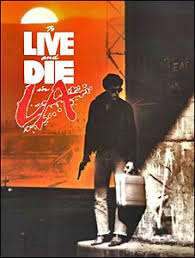The Sept. issue of Esquire has a fascinating article titled, "The New Hundred-Dollar Bill and the Making of American Money." This is an engrossing read, and it has plenty of tips on how to spot the fake notes, called supernotes, which are believed to originate in North Korea.
Between plastic threads woven into the bills, color-shifting inks, miniature graphics and watermarks, there are many ways that the Treasury Dep't. protects our currency. If you read it, you'll be pulling bills out of your wallet to inspect them for features described in the article, and asking for fresh specific-denomination bills at the bank.
The facts you read about our currency will give you plenty of factoids to spill while drinking with your friends, and make for great reading. I learned something, the stationery company Crane, famed for its fine product used in things like wedding stationery, is the supplier to the Federal government of the paper they use to print the paper money. The technology that is used to design, supply materials, and then produce our paper money will leave you impressed with what they do to protect our currency. And for those of you who believe that everything in government is done for profit-tasking reasons, be sure to pay-attention to the part about the plan to eliminate single dollar-bills, for coins, sponsored in Congress by an AZ congressman, whose state would probably supply the copper used to make the majority of the replacement dollar coin, if not the entire thing.
If nothing-else, treat it as a way of defending yourself against some slimeball slipping you a bunch of fake paper currency when you accept a stack of money when you sell a big-ticket item for cash. The first ones in the stack may be real, but the inner ones might-not-be! Learn how to i.d. the fakes, multiple ways. You may find your real US currency hundred dollar bill printed by a counterfeiter as a hundred, is actually a five-dollar denomination! They remove the ink and re-print it, but they can't replicate all the safeguards found in the hundred. Shades of one of Michael Mann's early movies!


Between plastic threads woven into the bills, color-shifting inks, miniature graphics and watermarks, there are many ways that the Treasury Dep't. protects our currency. If you read it, you'll be pulling bills out of your wallet to inspect them for features described in the article, and asking for fresh specific-denomination bills at the bank.
The facts you read about our currency will give you plenty of factoids to spill while drinking with your friends, and make for great reading. I learned something, the stationery company Crane, famed for its fine product used in things like wedding stationery, is the supplier to the Federal government of the paper they use to print the paper money. The technology that is used to design, supply materials, and then produce our paper money will leave you impressed with what they do to protect our currency. And for those of you who believe that everything in government is done for profit-tasking reasons, be sure to pay-attention to the part about the plan to eliminate single dollar-bills, for coins, sponsored in Congress by an AZ congressman, whose state would probably supply the copper used to make the majority of the replacement dollar coin, if not the entire thing.
If nothing-else, treat it as a way of defending yourself against some slimeball slipping you a bunch of fake paper currency when you accept a stack of money when you sell a big-ticket item for cash. The first ones in the stack may be real, but the inner ones might-not-be! Learn how to i.d. the fakes, multiple ways. You may find your real US currency hundred dollar bill printed by a counterfeiter as a hundred, is actually a five-dollar denomination! They remove the ink and re-print it, but they can't replicate all the safeguards found in the hundred. Shades of one of Michael Mann's early movies!



